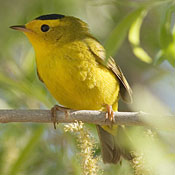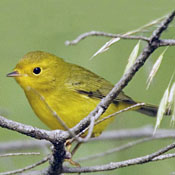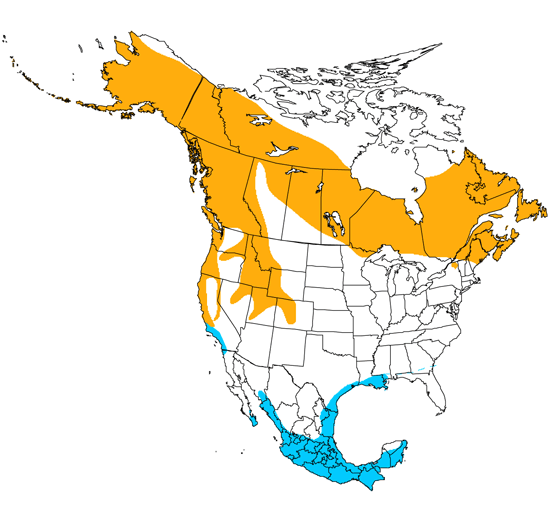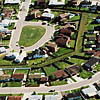Wilson's Warbler
Wilsonia pusilla

Perching

Length: 5 in. (12 cm )
This very active warbler is most often found in low but thick bushes, especially willow and alder riparian areas. Its bulky nest is cup-like, and made of dead leaves, grass and moss. At high altitudes the nest is placed on the ground, and along the coast it is placed low in a shrub. Insects make up most of the diet, but in the fall and winter, some berries are also eaten.
The four-digit banding code is WIWA.
Bibliographic details:
- Article: Wilson's Warbler
- Author(s): Dr. Biology
- Publisher: Arizona State University School of Life Sciences Ask A Biologist
- Site name: ASU - Ask A Biologist
- Date published: 13 Jul, 2017
- Date accessed: 24 November, 2025
- Link: https://askabiologist.asu.edu/activities/bird/wilsons-warbler
APA Style
Dr. Biology. (Thu, 07/13/2017 - 15:38). Wilson's Warbler. ASU - Ask A Biologist. Retrieved from https://askabiologist.asu.edu/activities/bird/wilsons-warbler
Chicago Manual of Style
Dr. Biology. "Wilson's Warbler". ASU - Ask A Biologist. 13 Jul 2017. https://askabiologist.asu.edu/activities/bird/wilsons-warbler
MLA 2017 Style
Dr. Biology. "Wilson's Warbler". ASU - Ask A Biologist. 13 Jul 2017. ASU - Ask A Biologist, Web. https://askabiologist.asu.edu/activities/bird/wilsons-warbler
Be Part of
Ask A Biologist
By volunteering, or simply sending us feedback on the site. Scientists, teachers, writers, illustrators, and translators are all important to the program. If you are interested in helping with the website we have a Volunteers page to get the process started.








